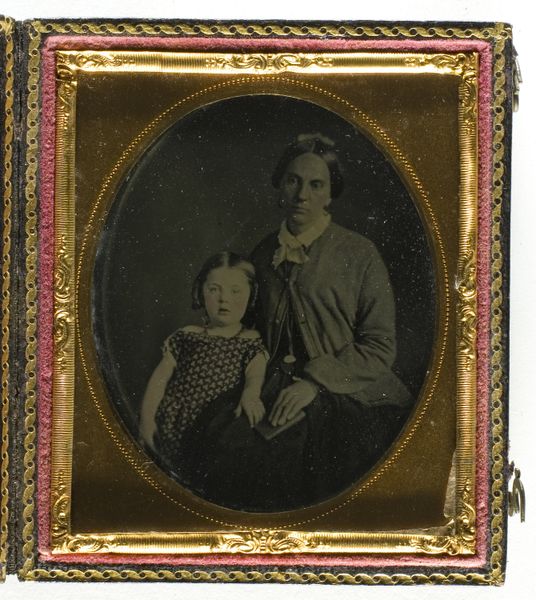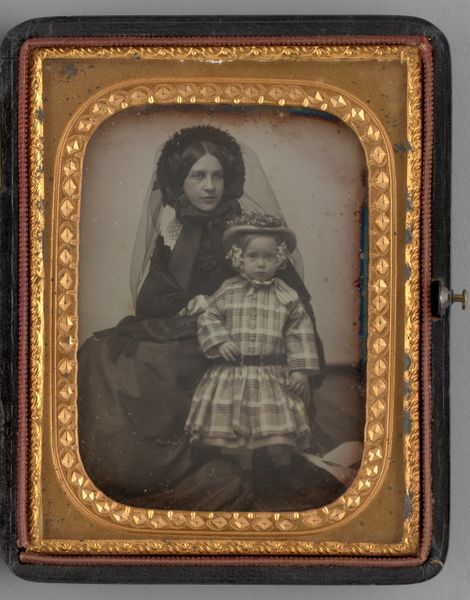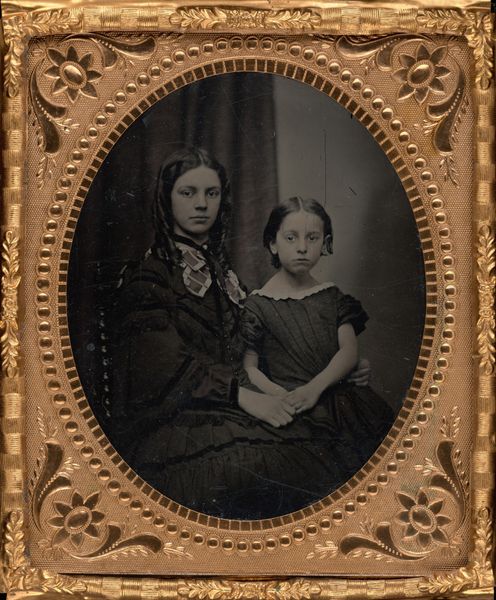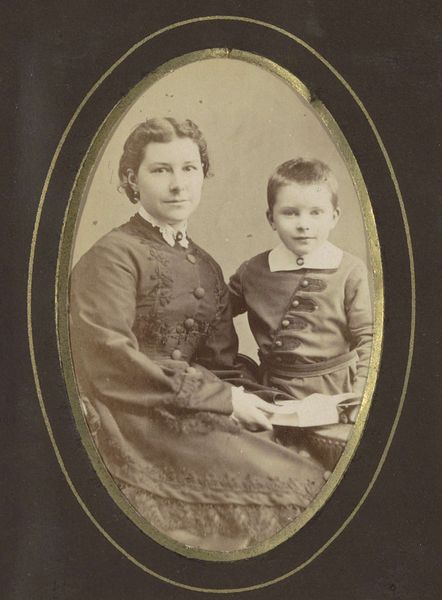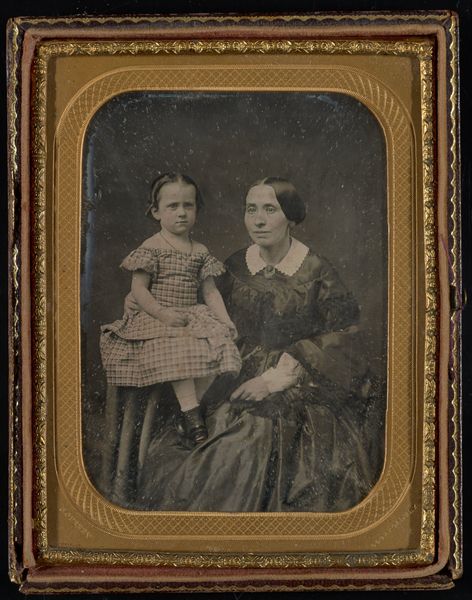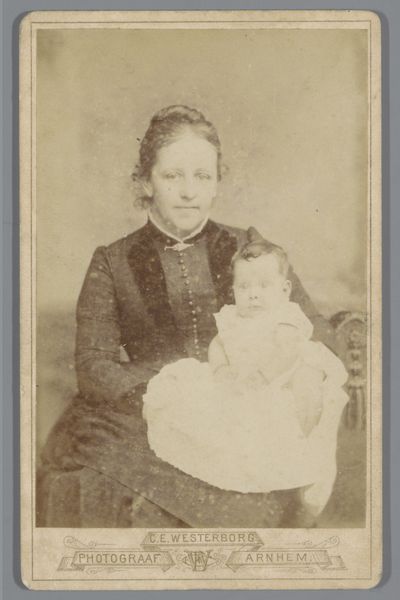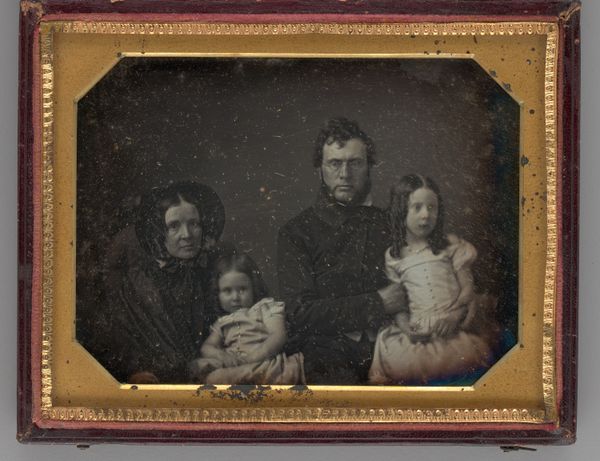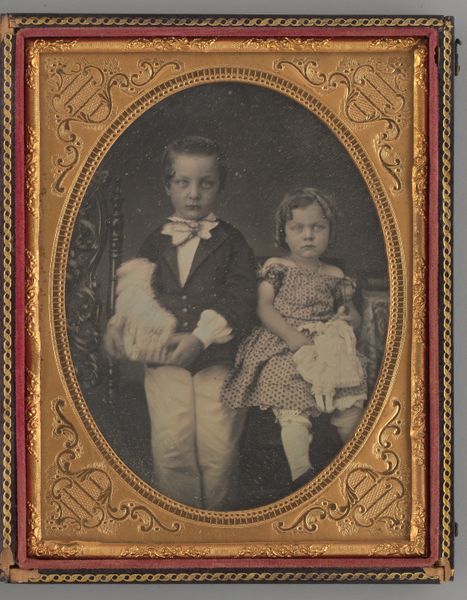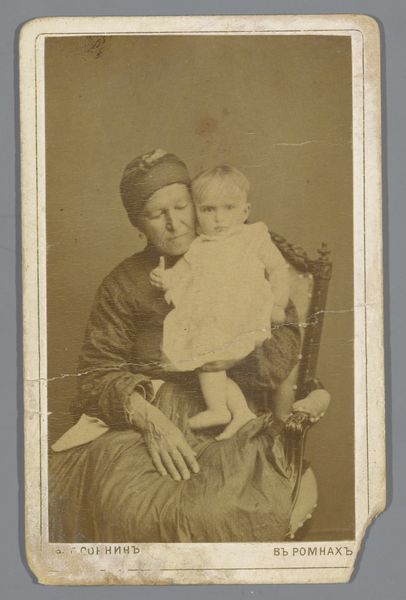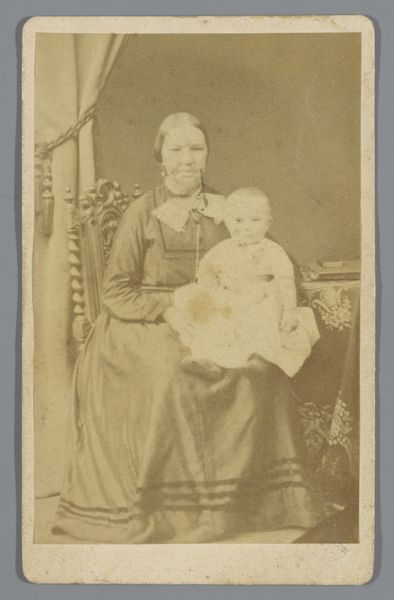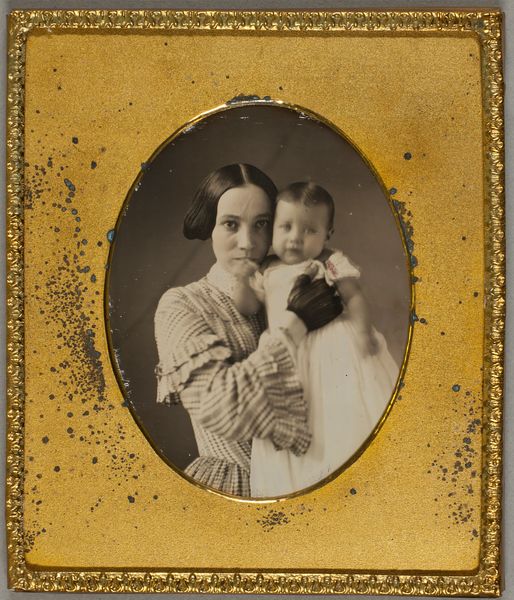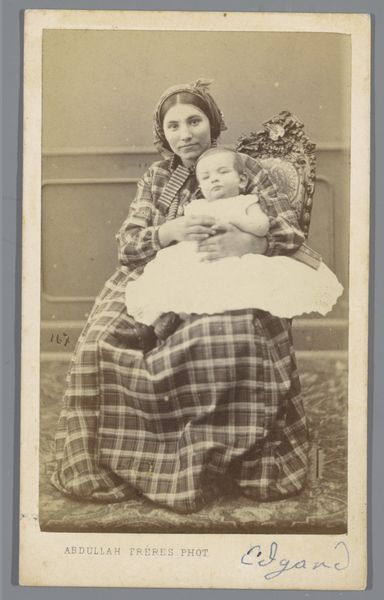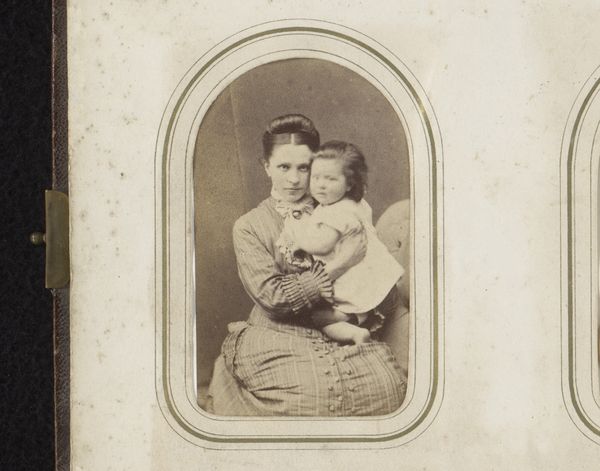
daguerreotype, photography
#
portrait
#
16_19th-century
#
daguerreotype
#
photography
#
19th century
#
united-states
Dimensions: 13.8 × 10.6 cm (4 1/4 × 5 1/2 in., plate); 15 × 24 × 1.3 cm (open case); 15 × 12 × 2 cm (case)
Copyright: Public Domain
Frederick Langenheim created this daguerreotype, a very early type of photograph, sometime in the mid-19th century. It depicts a woman and child, likely mother and son. In this era, photography was rapidly evolving from a scientific novelty to a means of personal and social documentation. The rise of photography coincided with significant shifts in social structures, especially ideas around family and identity. This portrait reflects the emerging middle class in the United States, for whom such portraits became a way to assert their social status. Notice how the subjects are formally posed, which reflects the influence of earlier portrait painting traditions, as well as the lengthy exposure times needed for early photography. The book the woman holds may be a nod to female education and literacy, a developing ideal at this time. Historians use a wide range of resources – from census records to fashion plates – to uncover the stories behind such images, and to situate them within the broader social and institutional contexts that gave them meaning.
Comments
No comments
Be the first to comment and join the conversation on the ultimate creative platform.
